- Home
- slideshows
- miscellaneous
- The best instant cameras
The best instant cameras
The best instant camera overall

The best easy-to-use instant camera
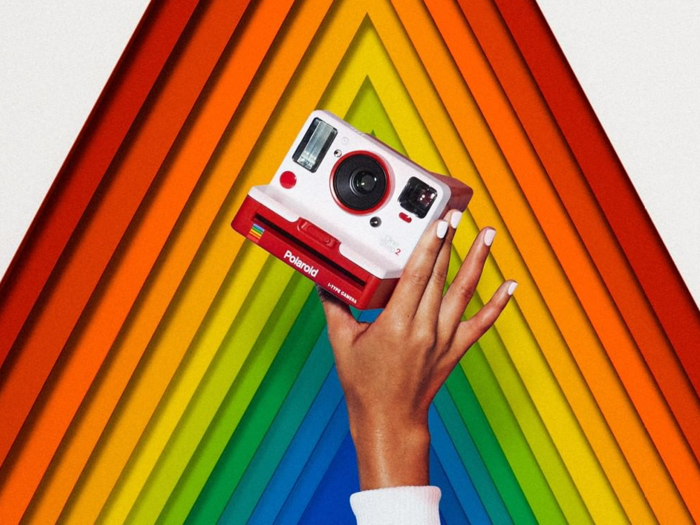
When you're looking to keep things simple with instant print cameras, the Polaroid Originals OneStep 2 delivers better than any other model.
The OneStep 2 is inspired by the original 1977 Polaroid OneStep Land Camera, and the new version is a modern upgrade of the classic design, though the heft of the camera does harken back to days of old. The OneStep 2 weighs nearly a pound, and with the body measuring 6.7 by 4.7 by 4.7 inches, it's not fitting in your pocket anytime soon.
Its variable settings are few, but you do have the opportunity to increase or decrease the exposure a bit, with the +/- switch on the front of the body. You can also suppress the flash with a small button on the back. Otherwise, the flash is automatic. It also has a self-timer, so you can set the camera up to take selfies.
Polaroid Originals is the only brand that can produce the classic Polaroid-sized film, so if you want the large 3 by 3-inch photos synonymous with the Polaroid name, the OneStep 2 is for you. PC Mag loves the black and white film and was impressed with its consistency and clarity, but they found the color film to be much less reliable, often producing duller, lower-contrast photos than they had hoped for.
At only eight photos per pack, the film can get expensive, but it may serve to make you a more intentional and thoughtful photographer.
Pros: Fully automatic features that are very easy to use, multiple body color options, fun to use and shoot with, classic Polaroid-sized images
Cons: Color prints not as consistent in quality as monochrome prints, large body is bulky, film is expensive
The best classic-looking instant camera
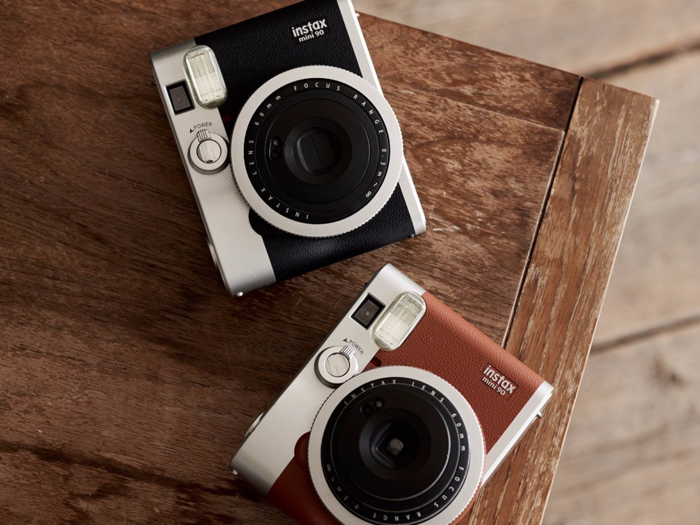
Few new instant cameras have the same vintage vibe as the original models from the 1960s and 1970s, but the Fujifilm Instax Mini 90 Neo Classic comes closest.
Rather than the curved lines on the camera body or the bright colors that you'll find with some new instant cameras, the Instax Mini 90 has a rectangular look with black or brown body colors and silver trim.
The Instax Mini 90 contains several different exposure modes, including a double exposure that results in some very interesting images, according to the Popular Photography review. However, you are limited to an image print size of 2.4 by 1.8 inches with the Mini film.
The Mini 90 Neo Classic is a slightly older instant camera, but it still carries plenty of desirable features that make it a fun party camera with its creativity and versatility, according to The Phoblographer review.
This camera is also a bit smarter than some other instant cameras on the market. It will automatically detect the brightness in the room and compensate with the correct amount of flash and exposure to improve your image quality a bit. It also has modes like "macro" for up-close shooting and "kids mode" for fast-moving subjects like children and pets.
Pros: Fun shooting modes and a double exposure mode, retro camera body look is cool, makes use of common Mini instant film, prints have a vintage look, fun camera to use at parties and other events
Cons: Ergonomics for shooting photos are poor, price is a little high, image quality isn't great
The best instant camera with digital storage
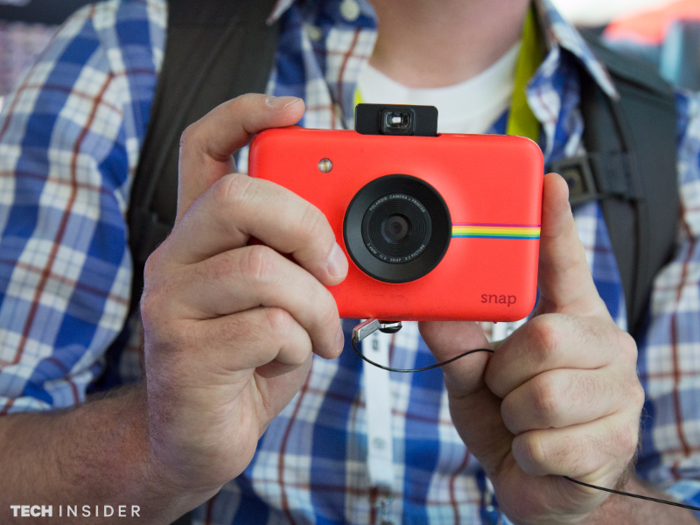
The Polaroid Snap Touch is the best of both worlds in a small package. Not only can you instantly print your photos, but it's also got the internal storage of a typical digital camera. It has a 3.5-inch touchscreen, which allows for recording photos to a microSD memory card, and it can record HD video. Or you can choose to create prints of 2 by 3 inches directly from the camera using Zink — short for zero ink — technology.
This camera is expensive compared to most other instant print cameras as you might expect, considering its digital photography features. The Zink printing system differs from traditional instant print systems, making it a bit more expensive to use, but the photos do emerge fully developed, unlike traditional Polaroid prints.
The Snap Touch doesn't have many buttons, as you'll control most of the camera's features with the touchscreen, which is a below-average quality screen, according to the Stuff review.
The Phoblographer dislikes that the camera doesn't make use of the classic Polaroid print-style film, but said the Snap Touch offers some fun filters.
The camera body is available in multiple colors with the traditional Polaroid rainbow stripe on the front of each one. The Snap Touch looks more like a point-and-shoot digital camera than a typical instant print camera. And the Nerd Techy review says the image quality of the digital photos with the Snap Touch is similar to what you'd receive with an average point-and-shoot camera.
Pros: Rare combination of instant prints and digital image storage, includes LCD screen, can save photos to a removable memory card, quality of digital images matches point and shoot cameras
Cons: Build quality is questionable, instant prints are very slow, LCD screen has below average quality, high price
The best instant camera with manual controls
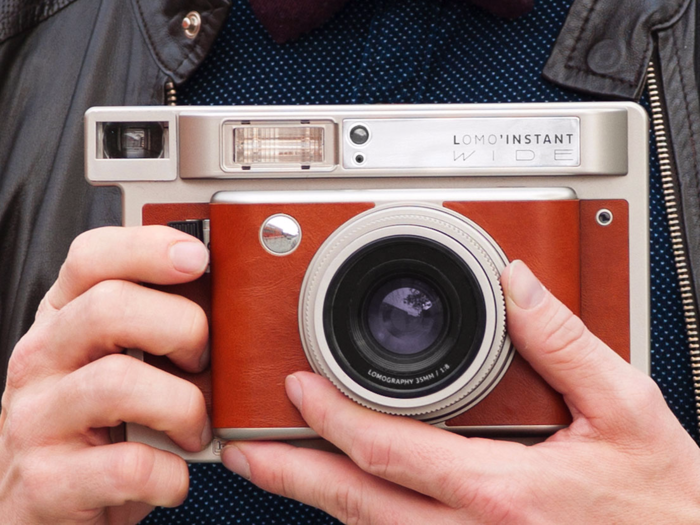
Most instant print cameras don't offer many options for controlling the camera settings. They're primarily automatic cameras that just want you to line up the scene and press the shutter button. The camera takes care of the rest.
But the Lomography Lomo'Instant Wide camera has a large number of settings you can control, according to The Phoblographer, making it easier to create better-looking instant prints.
PetaPixel appreciates the screw-on lens adapters that change the look of your photographs. This combo pack comes with the built-in 90mm lens as well as an ultra-wide-angle lens and a close-up lens. It also comes with four color gels that let you play with different tones. PC Mag calls the Lomography camera the best instant print camera on the market because of its image quality.
One of the best features of the Lomo'Instant Wide camera is that it uses wide-format film, which means your actual image size is larger than with most instant print cameras, measuring 3.9 by 2.4 inches. But to create such large instant prints, the camera body must be large, which the Format magazine review says makes the camera awkward to hold.
Pros: More manual control options than other instant print cameras, uses wide-format film for larger prints than other models, provides best instant print image quality
Cons: More expensive than other options, durability is a question mark, large camera is awkward to hold and use
A brief history of the instant camera and how it works
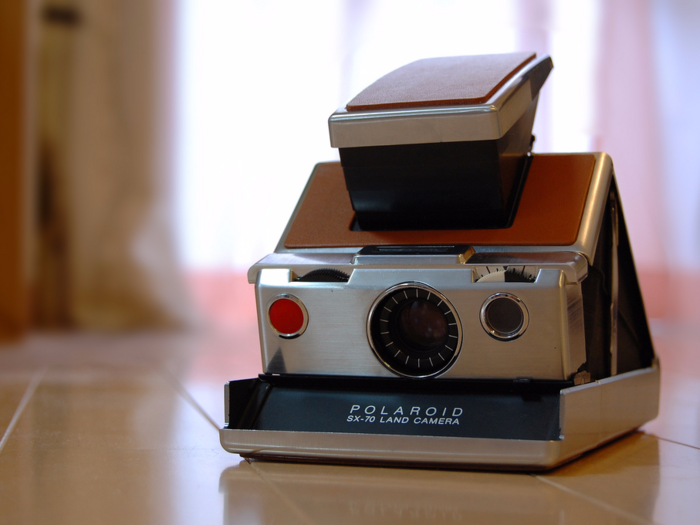
Edwin Land, the founder of Polaroid, created the first instant print camera in 1948. It was called the Polaroid Land Model 95. Less than 10 years later, the millionth instant camera was manufactured. By the 1960s, color Polaroid instant print cameras were available. Polaroid instant print cameras quickly went viral.
With an instant film camera, you'll place a pack of film inside the body of the camera. Upon pressing the shutter to take a photo, the camera exposes this film. As light travels through the lens and strikes the film, an image is generated. Once the film is exposed, the camera ejects it, and it becomes your instant print.
Instant camera "film" actually consists of light-sensitive coated paper, as PetaPixel discusses. Different layers of the coating react to different colors in the light. A variety of chemicals are also used within the layers of coating and papers to handle the developing and sealing of the image. Once the camera exposes the instant film to light, the chemicals begin to work, allowing the image to show up on the paper.
Even during the past several decades, instant film photography existed in a niche area of the market. But once Polaroid filed for bankruptcy in 2001, the possibility of losing access to instant film and instant print photography inspired some new players to enter the instant photography market. A few different companies such as Fujifilm and Lomography are making new instant film cameras, as well as types of film that fit vintage Polaroid cameras, all of which keep instant print photography alive.
Instant cameras versus digital cameras
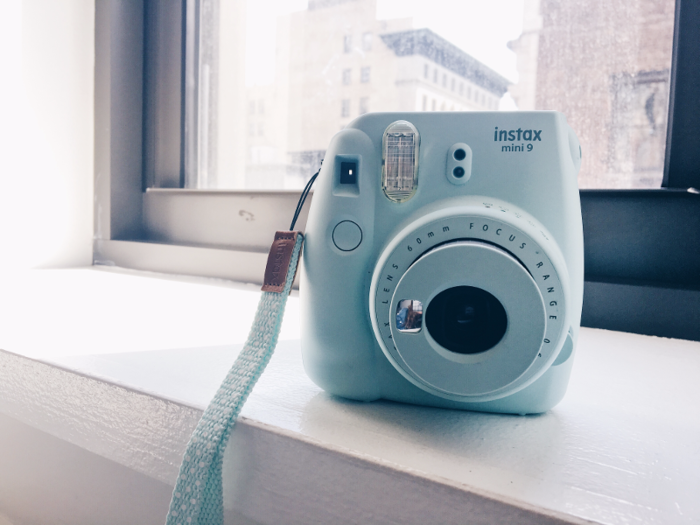
Although instant print photography won't be eclipsing digital photography anytime soon, many people like to use instant print cameras as a supplement to digital photography. Here are some of the differences between the two.
Create prints now: The instant print camera's greatest advantage over digital cameras is the ability to shoot a photo and have a print in your hand a minute later. You can look at digital photos on your smartphone screen instantly, but holding an actual print in your hand requires a bit more time and several steps with the digital camera.
Print size: Most instant prints are extremely small. The most common type of instant film in use today, called Mini film, creates prints with an image size area of about 2.4 by 1.8 inches, according to PC Mag. The Wide film format has a print size of 3.9 by 2.4 inches. The classic 3 by 3-inch Polaroid size is only produced by Polaroid Originals. That's quite a bit more limiting than what you can do with modern digital cameras, where multiple larger print sizes are easy to create with a home printer.
Image quality: Digital cameras can create images of a far greater quality than instant print cameras. But most people who are using instant print cameras aren't looking for tremendous image quality. They just love the grainy look and feel of instant prints, which is far different from prints you'd make from photos shot with a digital camera.
Cost per print: It's far less expensive to shoot photos and make prints from a digital camera than with an instant print camera. Instant prints typically cost $0.75 to $1.50 per print, but you can use a photo print service to create prints from your digital camera for less than $0.50 or even $0.25 per print, although larger prints may cost more. Unfortunately, if you shoot a terrible photo with an instant print camera, you still have the cost, even if you throw away the print. There are no free do-overs with instant prints. And some of us really need those do-overs because of our less-than-professional-level photography skills.
Fun: Ultimately, most people choose to use instant print cameras because they're just fun. That doesn't mean digital photography isn't fun, but there's still that feeling of magic to see an instant print appear on the paper. Instant print cameras may not be as efficient or provide the quality of a digital camera, but they can be incredibly enjoyable.
Popular Right Now
Popular Keywords
Advertisement